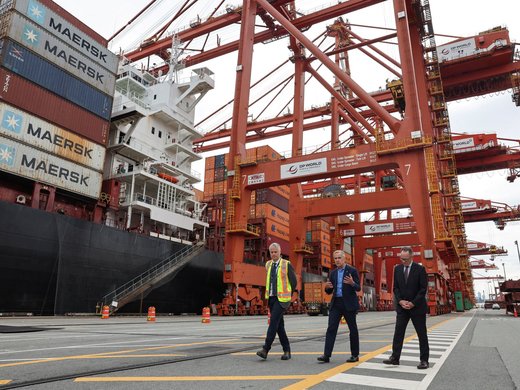After a lull since the publication of the final text of the Comprehensive Economic and Trade Agreement (CETA) between Canada and the European Union (EU) at the end of February, CETA is now back in the news.
The Brexit vote of June 23rd has raised two concerns about CETA: (1) the EU’s willingness to ratify the free trade agreement now that it has to focus its attention on negotiating Britain’s exit from the EU and (2) the impact on the Canadian economy if the UK is no longer part of CETA, since it is our largest trading partner in Europe.
On the first issue, the July 5th announcement by the European Commission, which negotiated CETA for the EU, that it had formally proposed the signature and ratification of CETA to the Council of the EU (formerly known as the Council of Ministers) should put to rest any concern that the EU would put CETA on the backburner while it deals with the Brexit situation.
Indeed, the Commission made clear that it wanted to move forward with CETA’s ratification in order to show that the EU would continue functioning normally in spite of the Brexit vote. It also wished to confirm the EU’s commitment to maintain and deepen trade and investment links with the rest of the world, especially with close economic and political partners like Canada.
Nevertheless, the Commission took into account the member states’ concern about people’s scepticism vis-à-vis globalization and free trade, which was an important factor behind the Brexit vote. As a result, it presented CETA as a mixed agreement to the Council of the EU rather than as an EU-only agreement, even though it indicated that it was of the opinion that CETA is legally not a mixed agreement.
CETA as a mixed agreement means that trade ministers in the Council of the EU will have to unanimously vote in favour of the agreement for it to move to the European Parliament (EP), where only a majority is required for approval. If the Commission had sent CETA as an EU-only agreement, then only a qualified-majority vote would have been required in the Council.
Consequently, with CETA as a mixed agreement, the member states have much more power to block the agreement (since they have a veto) or to use it as leverage as Bulgaria and Romania are wont to do in order to get Canada to lift its visa requirement for Bulgarian and Romanian citizens. (It is rumoured that Citizenship and Immigration minister, John McCallum, is planning to visit Bulgaria and Romania over the summer in order to settle this issue and prevent them from vetoing CETA in the Council. This decision by the Canadian government would be in line with the commitment to lift visa requirements on Mexican nationals announced at the end of June when Mexican president Pena Nieto visited Ottawa.)
In addition to unanimity in the Council, CETA as a mixed agreement means that the EU member-states’ national and subnational parliaments will also vote to ratify the agreement, again giving more power to the member states. These votes are considered essential in order to increase the democratic legitimacy of CETA in particular and free trade in general, even though the EP argues that its approval of CETA should be sufficient in terms of democratic legitimacy since its members are directly elected by EU citizens.
What does this mean for Canada? It means that, providing the Bulgarian and Romanian visa issue is settled before the Council vote, CETA should provisionally come into effect sometime in 2017 following approval by the Council and the EP. At this point, 95% to 98% of the agreement should be in force throughout the 28 EU member-states (the UK is not expected to leave before 2019). The remaining parts of CETA would only become applicable as national parliaments ratify CETA. If a national parliament voted against CETA, then it would mean that 2-5% of the agreement would not be in force in that member state. In sum, the fact that Commission launched the ratification process on the EU’s side is positive news for Canada as Canadian firms can expect to have easier and cheaper access to the largest economy in the world.
As for the impact of Brexit on CETA, it will most certainly hurt Canadian firms doing business in the UK since they would not only lose the trade and investment benefits accorded by CETA but also possibly the access to the rest of the EU market from the UK, depending on what kind of agreement the latter negotiates with the EU. The end result might be that Canadian firms will consider exporting to and investing in other EU countries until the UK’s trade and investment status becomes clear.
Unless Canada negotiates a free trade agreement à la CETA with the UK, Canadian firms exporting to the UK would have to follow the rules established by the World Trade Organization (WTO) and its treaties since the UK is a member of the world trade body even if the EU speaks and votes with one voice at the WTO.
Ideally, Canada and the UK would simply transpose CETA into a bilateral agreement on the day that the UK exist the EU; however, particular lobby groups on both sides of the Pond might try to push their respective governments to modify the agreement in order to promote or defend their members’ interests. This means that a free trade agreement between Canada and the UK may come to differ from CETA and take more time to negotiate than a simple bilateral transposition of CETA, which would hurt both Canadian and British businesses in the meantime.
From a Canadian perspective, the fact that the EU’s ratification process is now underway is good news (ratification on the Canadian side is easy since it only requires a cabinet decision [international treaties are a Crown prerogative] and not a parliamentary vote, even if the government has indicated that it would submit CETA to parliament). Providing that the federal government can satisfy the Bulgarians and Romanians on the visa issue, CETA should be provisionally in force by this time next year.
The next step for Canada is to begin examining the possibility of having in hand a trade and investment agreement with the UK when it exits the EU. The simplest way to do so would be to transpose CETA into a bilateral Canada-UK agreement, which may be wishful thinking given the political economy of trade interests in both countries.


